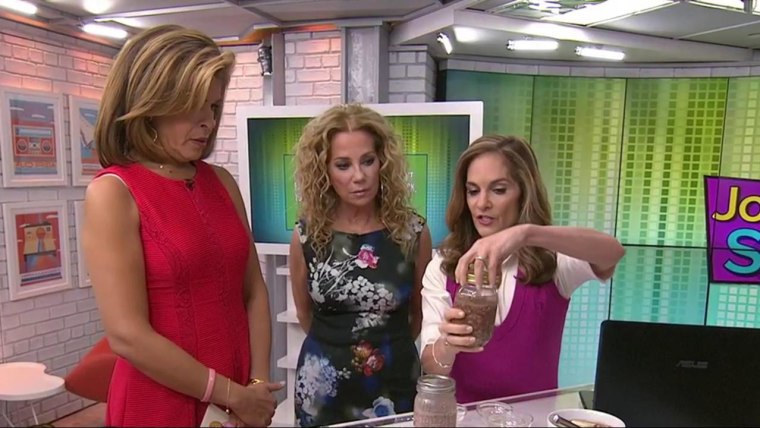Protein Diet Plan Indian Vegetarian
The protein powder aisle is beginning to look like the cereal aisle. Dozens of options, an abundance of ingredients and colorful packaging, with promises of better health. The market for more protein in the American diet has arrived — and it's not going away. The attraction to protein as a weight-loss and muscle-building nutrient has exploded so exponentially that many of us may be getting more than medical experts think we need.
Recently, a story came out about a woman who died after consuming an extremely high-protein diet. She was a body builder and suffered from a rare genetic condition called urea cycle disorder. This condition is an inborn error of metabolism and can be diagnosed in both children and adults. Those who have it may have a diminished ability to break down protein in the correct manner. As a consequence, the byproducts of protein don't leave the body like they should. Instead, they build up in the blood, and can cause coma or death.

According to the National Urea Cycles Disorder Foundation, the condition may be mild, and undiagnosed for years if the individual carrying it produces enough enzymes to remove these protein byproducts from the blood. It's when the body is pushed to the limit that problems may occur. An excessively high intake of protein can be one of these stressors.
Death from too much protein intake is not something you hear of every day, but there are certainly people who should focus on getting less (not more) protein in their diets. For example, individuals who have chronic kidney disease, certain diseases of the liver as well as phenylketonuria (PKU) and other inherited disorders all require a low-protein diet.
On the opposite end of this are populations that need more protein: endurance or weight-training athletes, pregnant and breastfeeding women, individuals recovering from surgery or injury and elderly. Then, there's the rest of us. What's the protein sweet spot for everyone inside the extreme ranges and can we keep including all the bars, powders and liquids safety and effectively?
The highs and lows of protein
Unlike other macro and micronutrients, there remains no official standard defining an upper limit for protein consumption, and most government standards recommend a bare bone minimum to be assessed by a universal calculation that takes your weight in kilograms multiplied by 0.8. For example, if you are a healthy, 150-pound woman, your low end of protein would start at 54.5 grams per day, and as for your high end, there's really no agreement on what that is.

Many experts believe we are getting way more than we need, but despite the very clear evidence that too many protein-rich foods like red and processed meat can lead to heart disease and cancer, it's unclear whether doubling down from other sources (such as plants) is negatively impacting health.
Why do we care so much about protein?
Protein has often been described as the building block of life. That's because all of our cells — including those that make up your hair, skin, bones, muscles and organs like your heart, brain and liver — contain protein. You'd be dead without it. Protein is a must if you want to grow — and thrive.

That's probably not what's driving the protein craze though. After all, how often do you think of your cells, or what's keeping them all alive? What's driving this is our desire to be thin and maintain, or build muscle. Protein, according to research, appears to play a positive role in both. This explains why new protein powders are coming out every week and why so many of us are turning to them to get that added boost.
How much do we really need?
Bottom line: Should we take a chill on this very hot macronutrient? Will death by protein be the next fear derived from food?
My advice to my patients is this: Embrace protein and the many benefits it can provide to health, but resist the urge to triple or quadruple your recommended amounts on a regular basis by downing protein drinks the way you would water. Going to this extreme may mean you're skimping out on other important macronutrients, like healthy fats and complex carbohydrates. While it may not lead to death in relatively healthy individuals, too much for too long may put too much stress on your kidneys, which can lead to other serious problems.

Be picky about what kind of protein you consume
Some liquid forms of protein and protein powders and drinks can be loaded with additional supplements and herbs, added sugar or excess amounts of sugar alcohols (which can lead to diarrhea) or artificial sweeteners.
Just like any other dietary choice, you'll want to find the options that best fit your goals. If you're a vegetarian or dairy intolerant, your best bet is a plant-based option made with pea, soy, hemp or rice. If you're not interested in a plant-based form, then whey, or bone broth products may work best for you.
Do your research, and try a few single packet options before you settle on buying an entire vat of it. A powder or drink can never mimic whole foods, so use them as a way to boost your protein for one meal, or after a workout, for example, but not exclusively.
You can get plenty of protein in the day by adding in small amounts at each meal, like sprinkling hemp seed in your yogurt in the morning, enjoying canned wild salmon over a salad for lunch, munching on roasted chick peas as a snack and ending the day with a grilled tempeh sandwich. In the world of food, you can have too much of ANY good thing. Protein included.
Kristin Kirkpatrick, MS, R.D., is the manager of wellness nutrition services at the Cleveland Clinic Wellness Institute in Cleveland, Ohio, and the author of "Skinny Liver." Follow her on Twitter @KristinKirkpat. For more simple swaps to improve your life, sign up for our One Small Thing newsletter.
Protein Diet Plan Indian Vegetarian
Source: https://www.today.com/health/how-much-protein-diet-too-much-t115350
0 Response to "Protein Diet Plan Indian Vegetarian"
Post a Comment